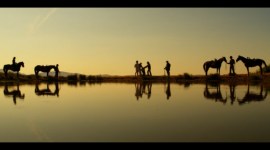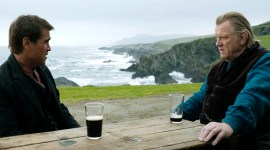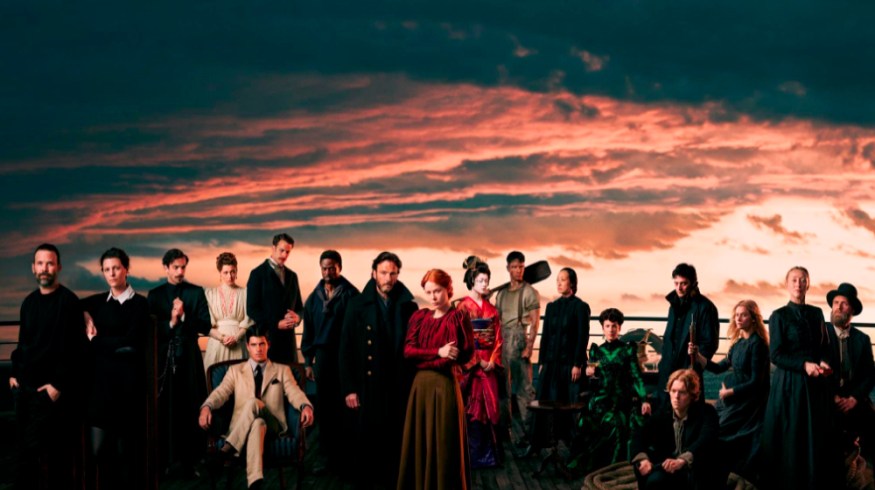
Netflix’s 1899 Evolves Virtual Production
The streamer’s mysterious boat fantasy series featured heavy use of virtual production techniques, especially ‘the volume.’ But the episodic also looked to evolve the use of new technology to help themselves and future filmmakers.
As a filmmaker, you’ll want to start learning about virtual production techniques, whether the latest version of the Unreal Engine or how to shoot in a LED volume. Cinematographer Nik Summerer is less of a technical artist than one who understands when things aren’t right. He also wasn’t versed in the use of the volume, so he had some catching up to do when his new show, 1899, was booked into an as-yet unbuilt LED volume studio in Germany to shoot it.
Their volume and the ideas on how it would work had to be created from scratch, but that had some advantages. They could take what had happened elsewhere and make it better, evolving it for themselves and others in the future. That meant experimentation, innovative additions like a turntable within the staging to allow for different angles, fast reverse shots, and the ability to bring in real-world SFX like rain. These were the first examples of those in the world of volume.
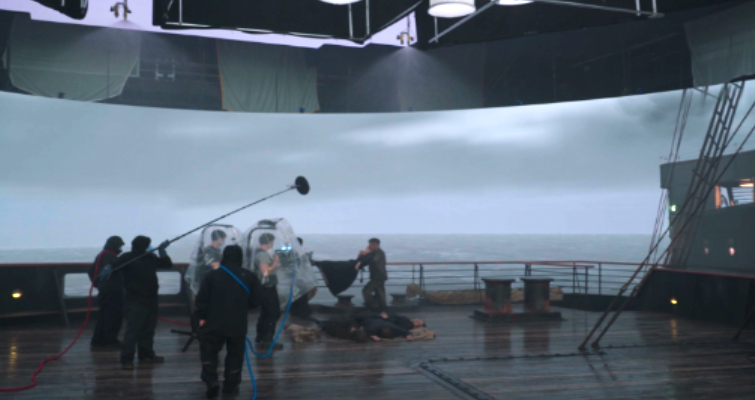
Nik explains where they were regarding the volume’s global use at the time. “Because the only other show using a volume at that time was The Mandalorian, we used them for most of our research. Their advice helped with the basic design, including the height, the choice of screens for the ceiling, and basic questions to do with the space we needed.”
But they had a bigger problem; their volume hadn’t even been built. It was to be constructed in Babelsberg Studios near Berlin, which would take most of 2020.
The First Volume Turntable
While the Berlin site set about constructing Dark Bay Studio, which would hold the volume, the crew decamped to London to learn how to shoot in such a new environment, albeit a smaller version set up just for them by their VFX vendor Framestore. While they went through their process and how practically they would make 1899, someone jokingly said they needed a turntable so they could take reverse shots quickly.
It turned out to be a great idea and timely, too as construction was able to adjust to having a brand-new element right in the middle of the set. Nik immediately saw the advantage of this new addition. “We talked about how to shoot in a volume, and this idea for a turntable came up. As normal, you want to shoot in one direction and then turn around and do the reverse shot. What if you could quickly reset everything and do that within a volume stage; the volume is the easy part as it’s just a digital asset.”
The Mandalorian had done the same thing but just flipped everything from the left side to the right side. You then move any props accordingly; depending on the complexity of the scene, it could be done relatively quickly. But the more complex the scene then, the longer the time it takes; Nik saw this as a problem.
“Regardless of how you do it, in my opinion, you are breaking the atmosphere of a scene. The actors are in a certain mood; everybody is working at that moment, so breaking it apart isn’t ideal. The question was how we could do it quickly and turn around at the same speed as you would in a normal location.”
The production’s SFX team would build something that could hold a few tonnes of weight as you had to support the props from the boat, the crew, and the cast. It would spin at a regulated speed with a diameter of 21m and take about three minutes to turn around.
All the lights are not mounted on the ship, so they don’t have to be change, just swapped over, but all the cabling has to be disconnected to let it spin freely.
Extending the use of the turntable could include walking shots and near-instant different angles, as it can stop anywhere around the circle. The turntable is one of a kind, although there are bound to be others soon as the numerous advantages are.
More Traditional Shoot with Rain
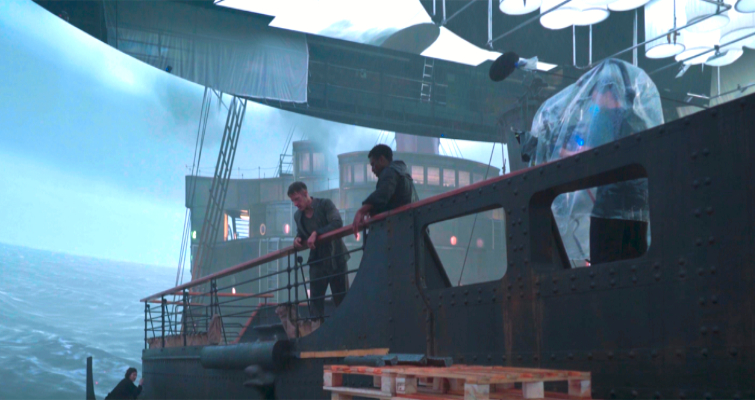
The turntable allows the production to have the comfort of a traditional way of filmmaking within the latest volume tech. With new users of a LED volume becoming potentially intimidated by this new way of doing things, offering them a connection to their usual way of working is a great idea.
But there was more innovation that looked to evolve the new virtual technology. Again this was the SFX department working out a way of incorporating standard features on the set. Being a drama about huge passenger liners in the middle of the Atlantic, there was a need to bring rain onto the set. With all the sensitive electronics involved with the LED panels and now the turntable, this was a complex problem to overcome.
The showrunner and director Jantje Friese and Baran bo Odar wanted to put a pivotal fight scene on the ship’s deck in the middle of a storm, so they wanted rain and lots of it. Nobody could see how they could achieve so much water within the confines of so much technology. But the SFX team again came up with the answer to control the rain rig and the water piping system in a way that wouldn’t affect any other electrical systems.
Advice on volume shooting
It was important for the 1899 production team not to limit themselves to their usual shoot regime while in the volume. They insisted on not compromising in that regard inside the volume space. So they started with traditional dolly moves and even a Technocrane on the set. It was actually on the second day of shooting that the director thought that a handheld camera movement was what was needed. This was to put the audience more ‘in the story,’ but it changed his concept of the whole thing.
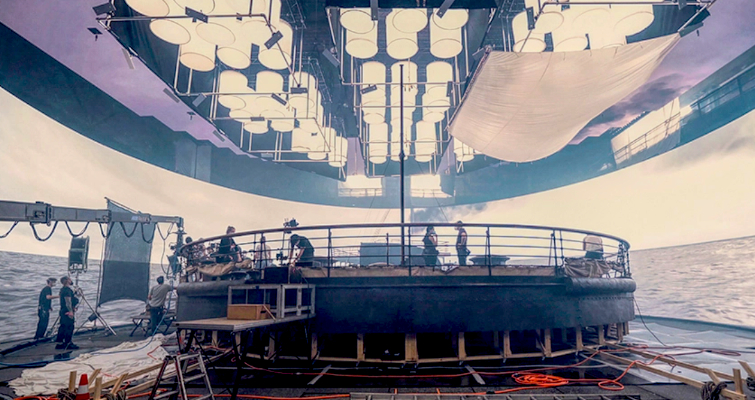
“We learned that there was a sweet spot for shooting within the volume, and you wanted to be around 4.5m away from the wall, but other than that, you had to treat it like a typical location shoot and not be limited by things. You can use all the shots, but you have to be careful with wider shots as they might need more work with VFX later to fix certain things.
“We didn’t have any major problems with Moiré, which everyone had warned us about, but we found shooting anamorphic certainly helped.”
Nik’s take from his experience
There’s nothing better than learning on the job, and that’s what Nik and his crew certainly did. But his takeaway from his experience should help others to deal with the challenges. “You need to familiarize yourself with the digital background. As in what the wall can give you because it’s also your lighting instrument or part of it.
“You need to spend a fair amount of time in there to understand the benefits of the wall, the quality of light you are getting, and the color temperatures you’re getting. Also, what the limits are like proper skin tone rendering, what you can do to improve this with supplemental lighting, what lights are in the foreground, for example.”
Nik spent around 55 days of the shoot in the volume and would use the system again, depending on the project. But 1899 has moved this technology on and, by doing so, has made it perhaps less fearful for other productions to take advantage of it.
1899 is currently in its first season on Netflix.
For more on virtual production, check ou



